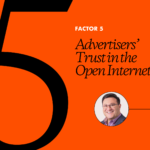Why are publishers hyper-focused on driving reader loyalty? Well, there are lots of reasons.
For starters, loyal, registered readers provide valuable first-party data that is critical for publisher sustainability. And considering that 10% of readers drive more than 74% of revenue, it makes sense that leading publishers are seeking out more effective strategies to help increase their loyalty and retention efforts.
One of the ways they’re accomplishing this? Personalization. Today, 7 out of 10 online publishers say they personalize the content they deliver to their website visitors.
Personalization is a powerful way to turn casual readers into registered, loyal users who return to your site again and again. This post will cover how personalized user experiences generate loyalty, and how publishers can overcome their biggest technical challenges to create effective personalization strategies.
Today’s consumers expect personalization
Marketers have been singing the praises of personalization for the better part of the last decade. Why? Because it works. 80% of consumers are more likely to purchase from a brand that provides personalized experiences. And the majority of marketers—88%—believe that audiences now expect personalization.
Personalization is powerful because it speaks directly to the consumer’s needs. It’s a way for brands to show their customers that they understand them, and will continue to provide value. The demand for personalized experiences is so strong that 74% of consumers say they get frustrated when website content is not personalized to meet their needs.
Far from a fad, effective personalization is table stakes for all companies—and publishers are no exception.
Publishers who personalize user experiences see increased loyalty
Publishers leveraging personalization stand to see increases in registrations and long-term loyalty. They can create personalized experiences on their website by allowing their readers to self-select the content types they’re most interested in. Readers who receive targeted content tend to stay on-site longer, return more often, and view more content. They also provide publishers with more information about their content preferences, allowing publishers to take advantage of rich first-party data insights.
Ultimately, personalization gives publishers a way to provide more value to their readers over time, leading to higher retention rates and more monetization opportunities.
… but not all publishers provide the most effective personalized experiences
There’s just one problem: truly effective personalization remains out of reach for many publishers. See, not all forms of personalization are created equal. Passive personalization—the kind that 84% of publishers are currently using—is simply based on a readers’ location or browsing history. It doesn’t provide the personalized content experiences that most readers are looking for.
Active personalization refers to the ability to self-select that we mentioned earlier. When readers can self-select their favorite content topics and authors, publishers can serve them the highly targeted content that they want.
All publishers need to develop lasting relationships with their readers, drive registrations, and build loyalty. These proactive publishers gain valuable first-party data insights; readers enjoy the valuable, active personalized experience that they’re looking for—it’s a win-win.


